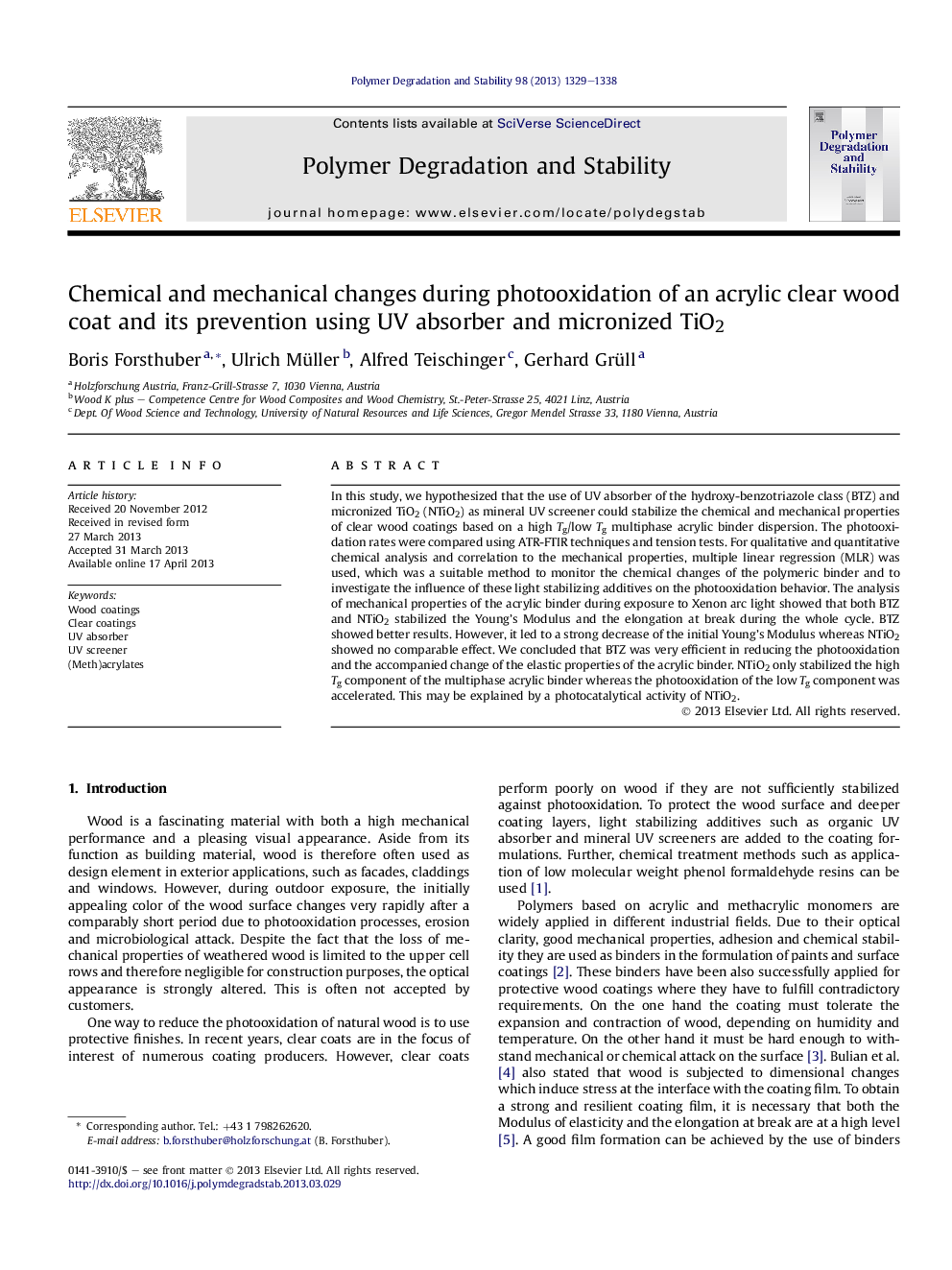| Article ID | Journal | Published Year | Pages | File Type |
|---|---|---|---|---|
| 5202206 | Polymer Degradation and Stability | 2013 | 10 Pages |
In this study, we hypothesized that the use of UV absorber of the hydroxy-benzotriazole class (BTZ) and micronized TiO2 (NTiO2) as mineral UV screener could stabilize the chemical and mechanical properties of clear wood coatings based on a high Tg/low Tg multiphase acrylic binder dispersion. The photooxidation rates were compared using ATR-FTIR techniques and tension tests. For qualitative and quantitative chemical analysis and correlation to the mechanical properties, multiple linear regression (MLR) was used, which was a suitable method to monitor the chemical changes of the polymeric binder and to investigate the influence of these light stabilizing additives on the photooxidation behavior. The analysis of mechanical properties of the acrylic binder during exposure to Xenon arc light showed that both BTZ and NTiO2 stabilized the Young's Modulus and the elongation at break during the whole cycle. BTZ showed better results. However, it led to a strong decrease of the initial Young's Modulus whereas NTiO2 showed no comparable effect. We concluded that BTZ was very efficient in reducing the photooxidation and the accompanied change of the elastic properties of the acrylic binder. NTiO2 only stabilized the high Tg component of the multiphase acrylic binder whereas the photooxidation of the low Tg component was accelerated. This may be explained by a photocatalytical activity of NTiO2.
